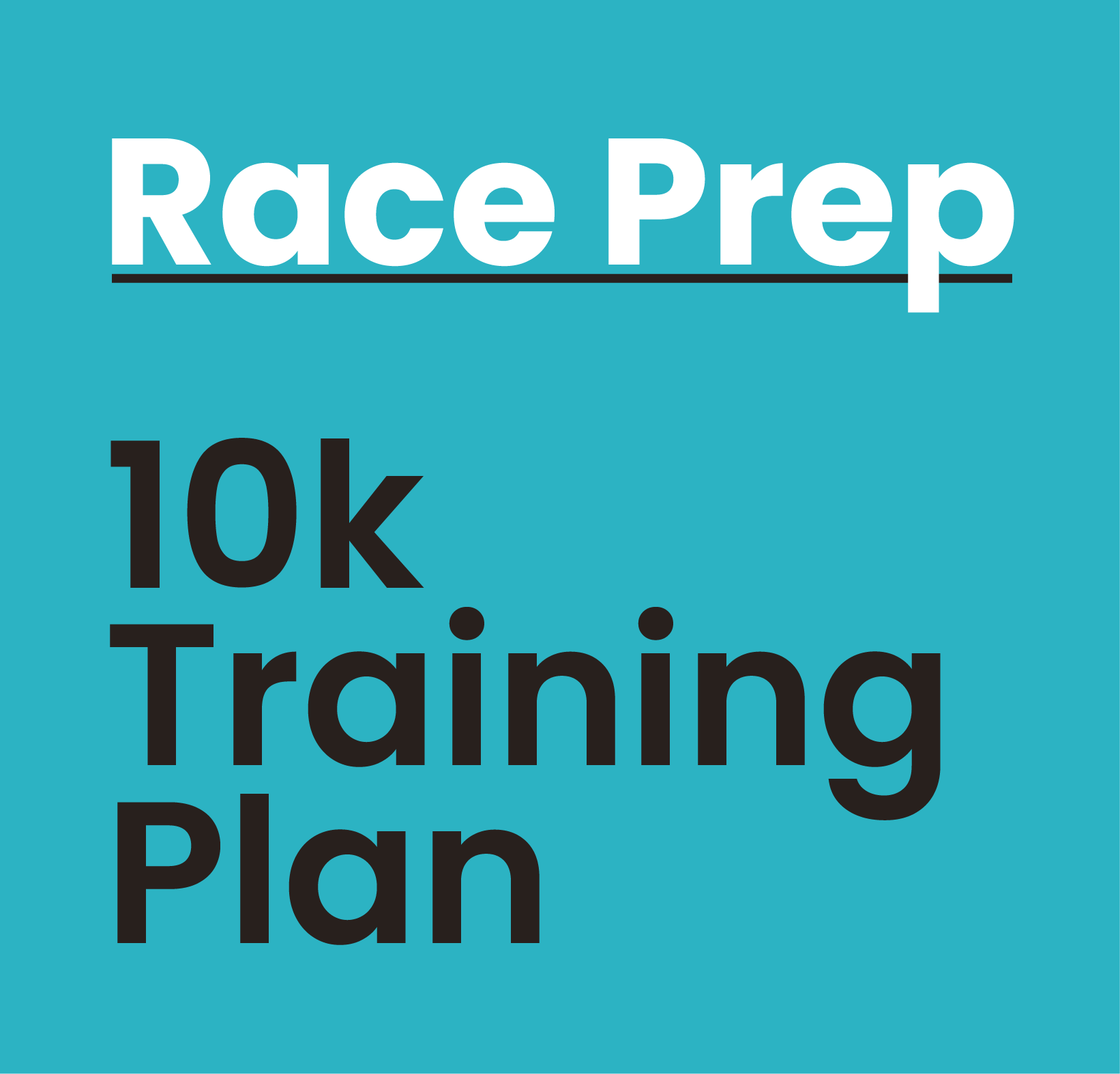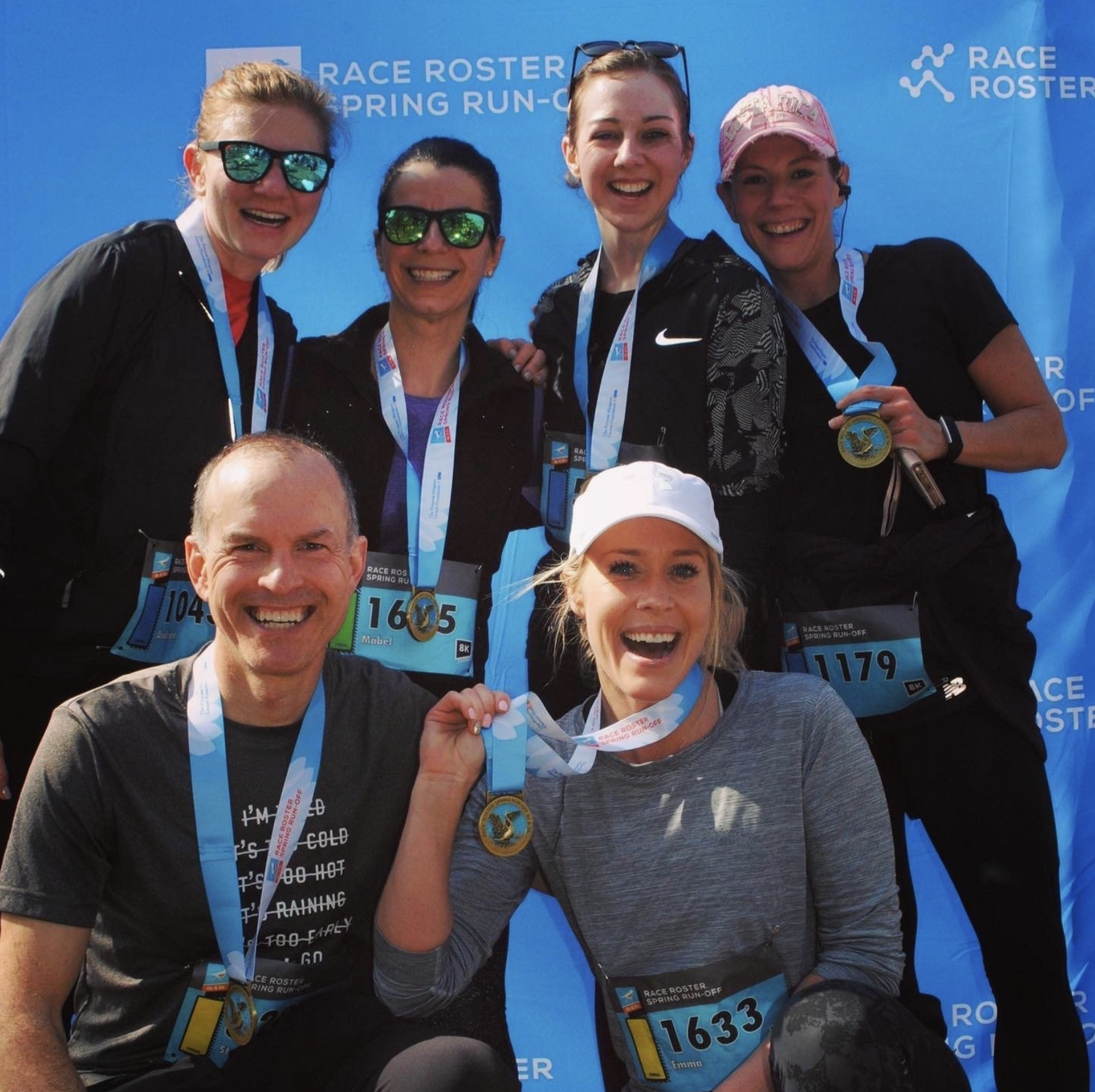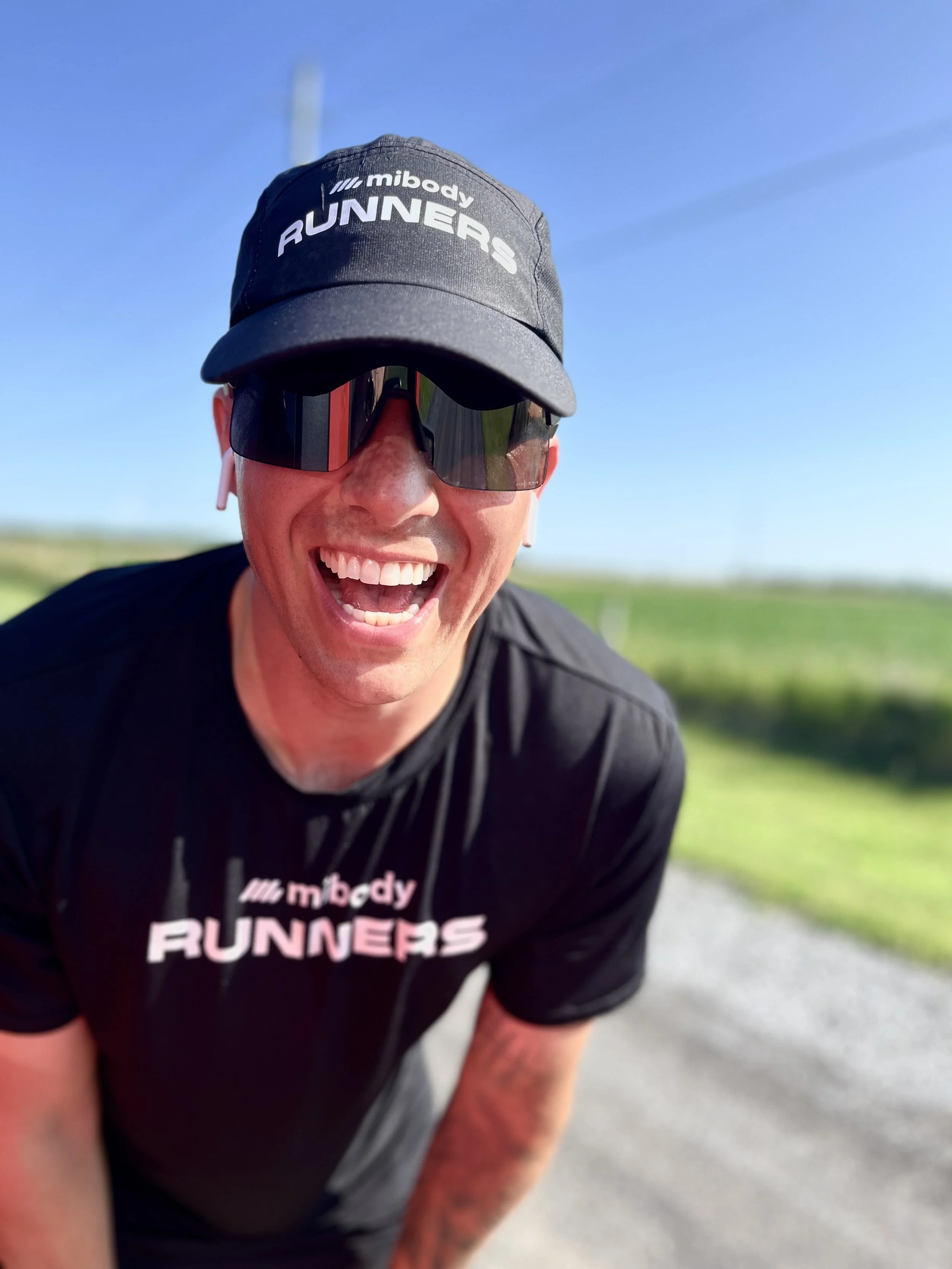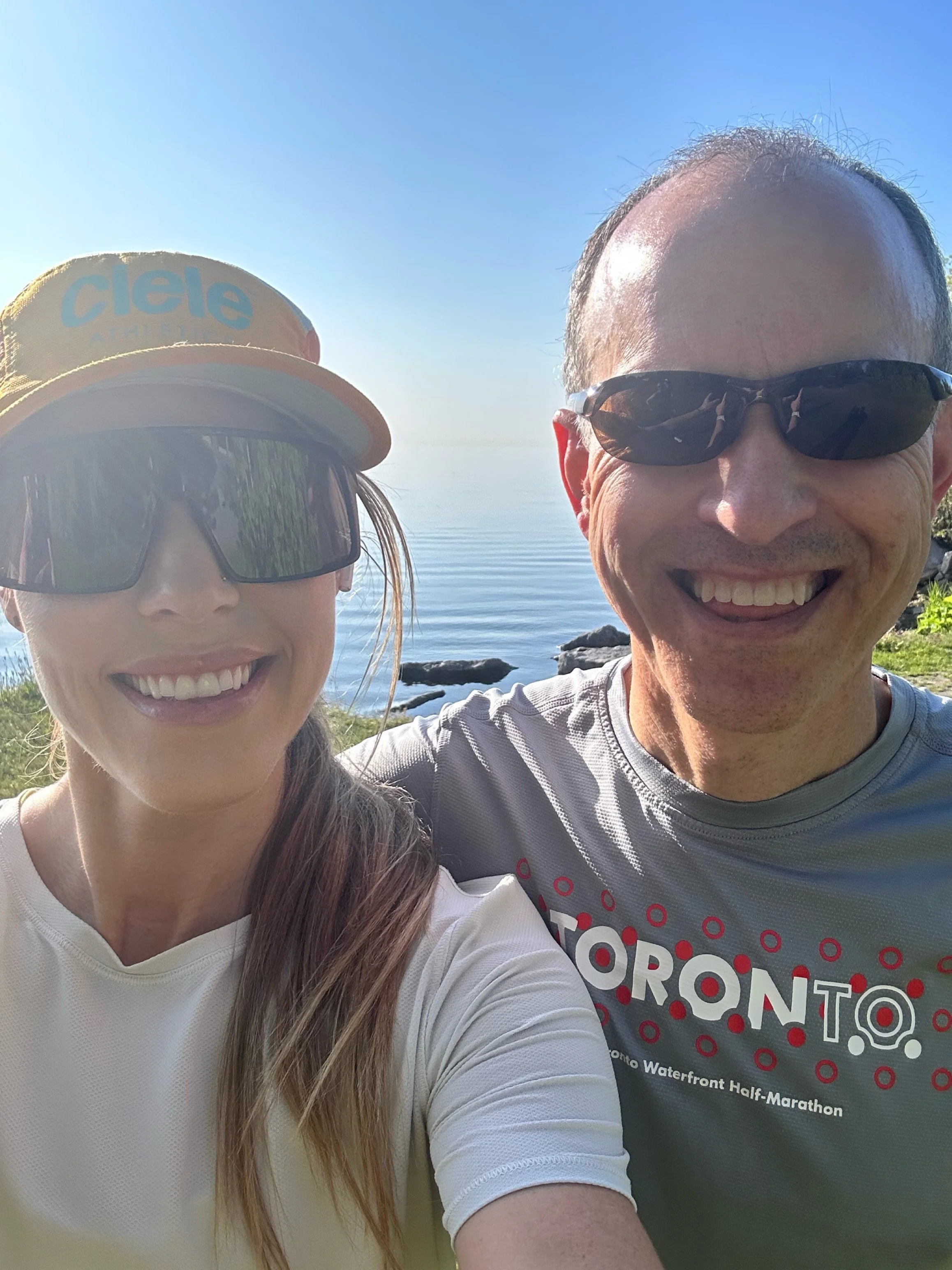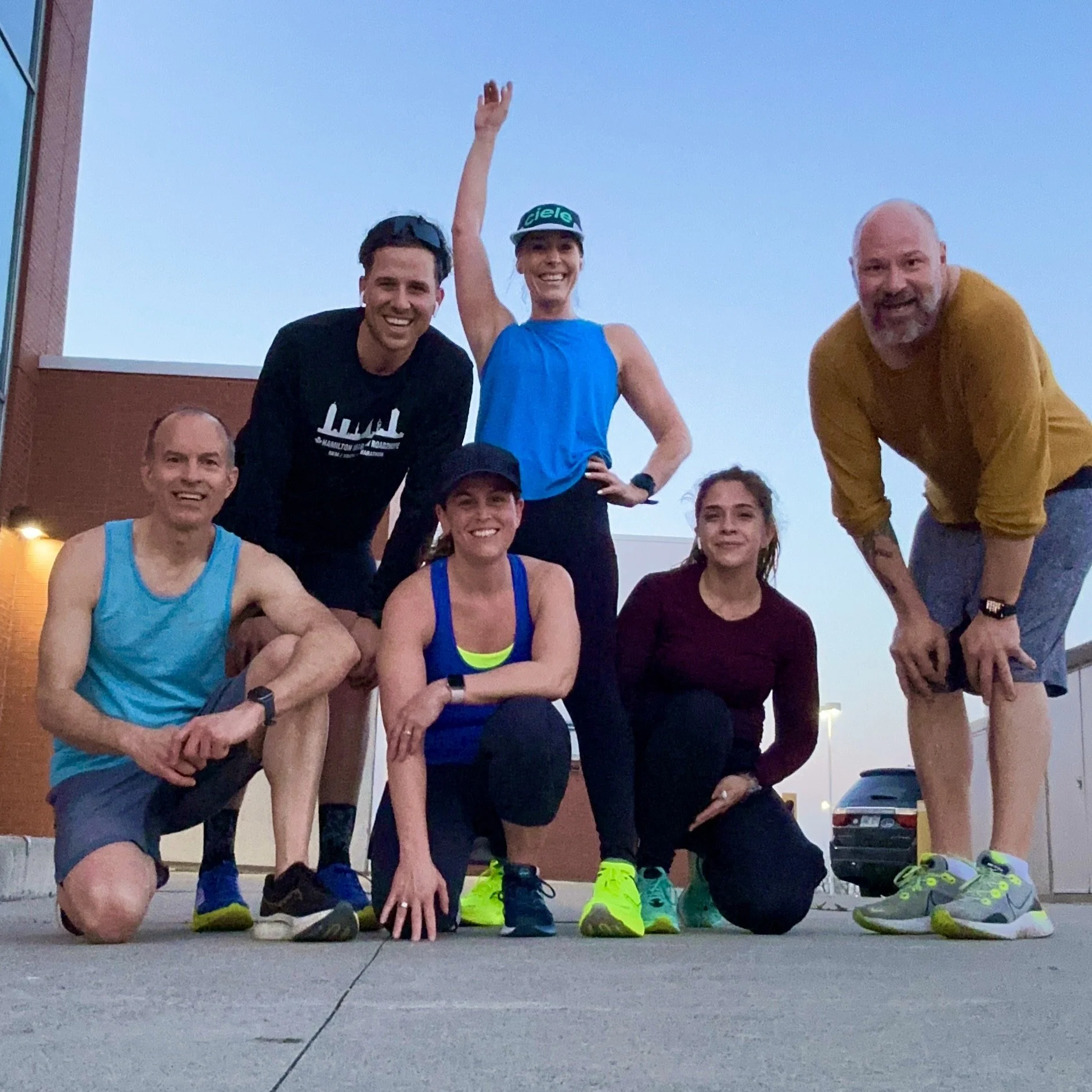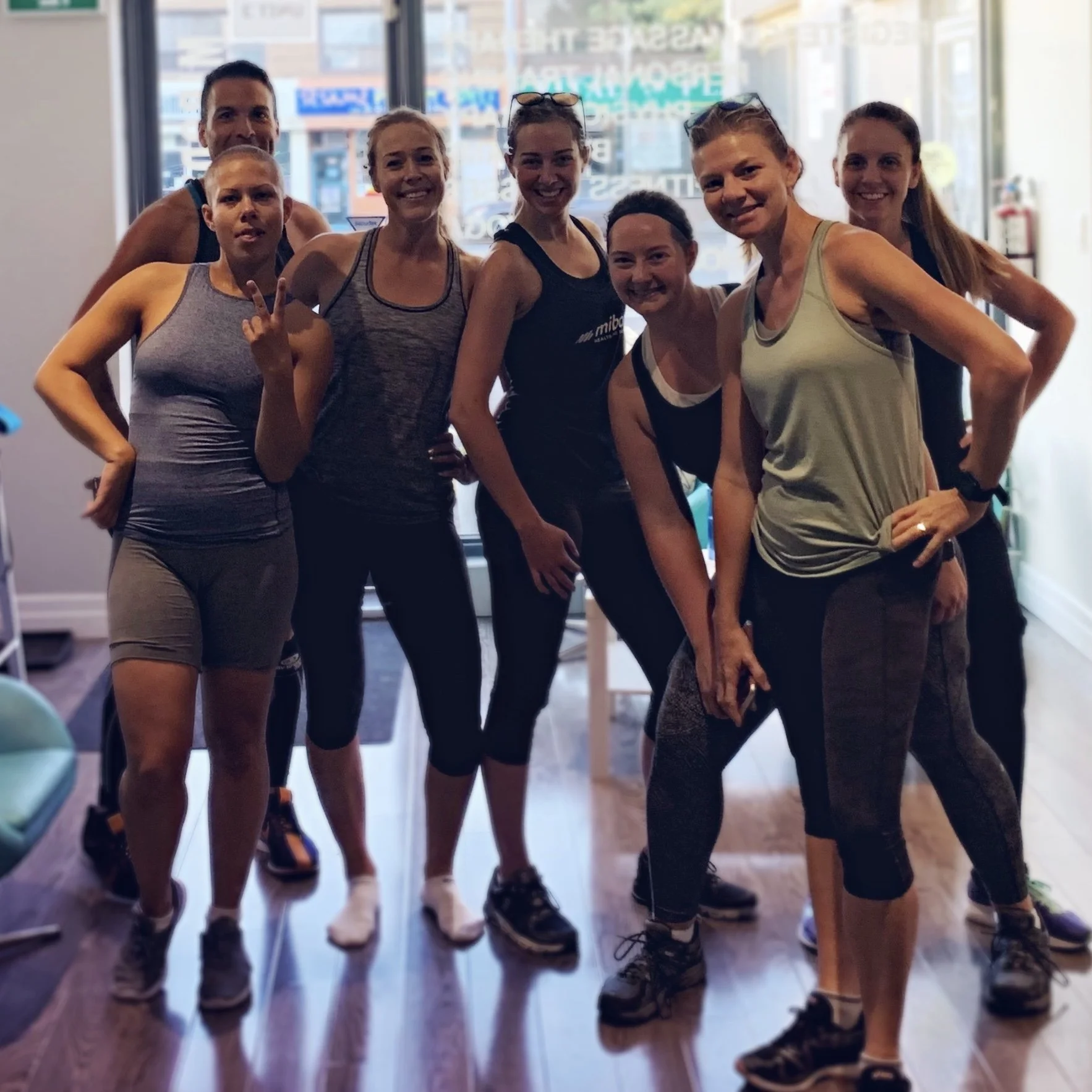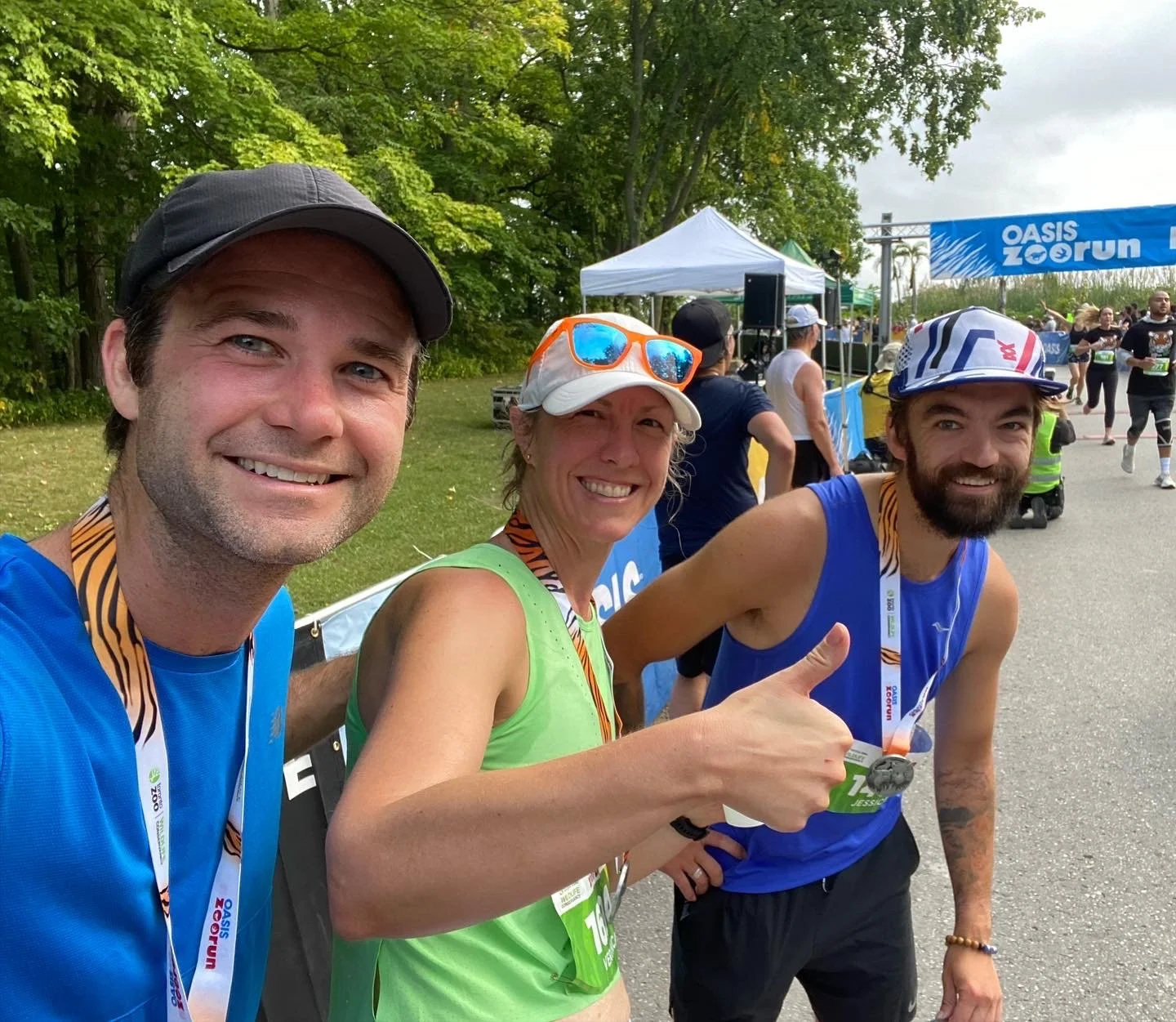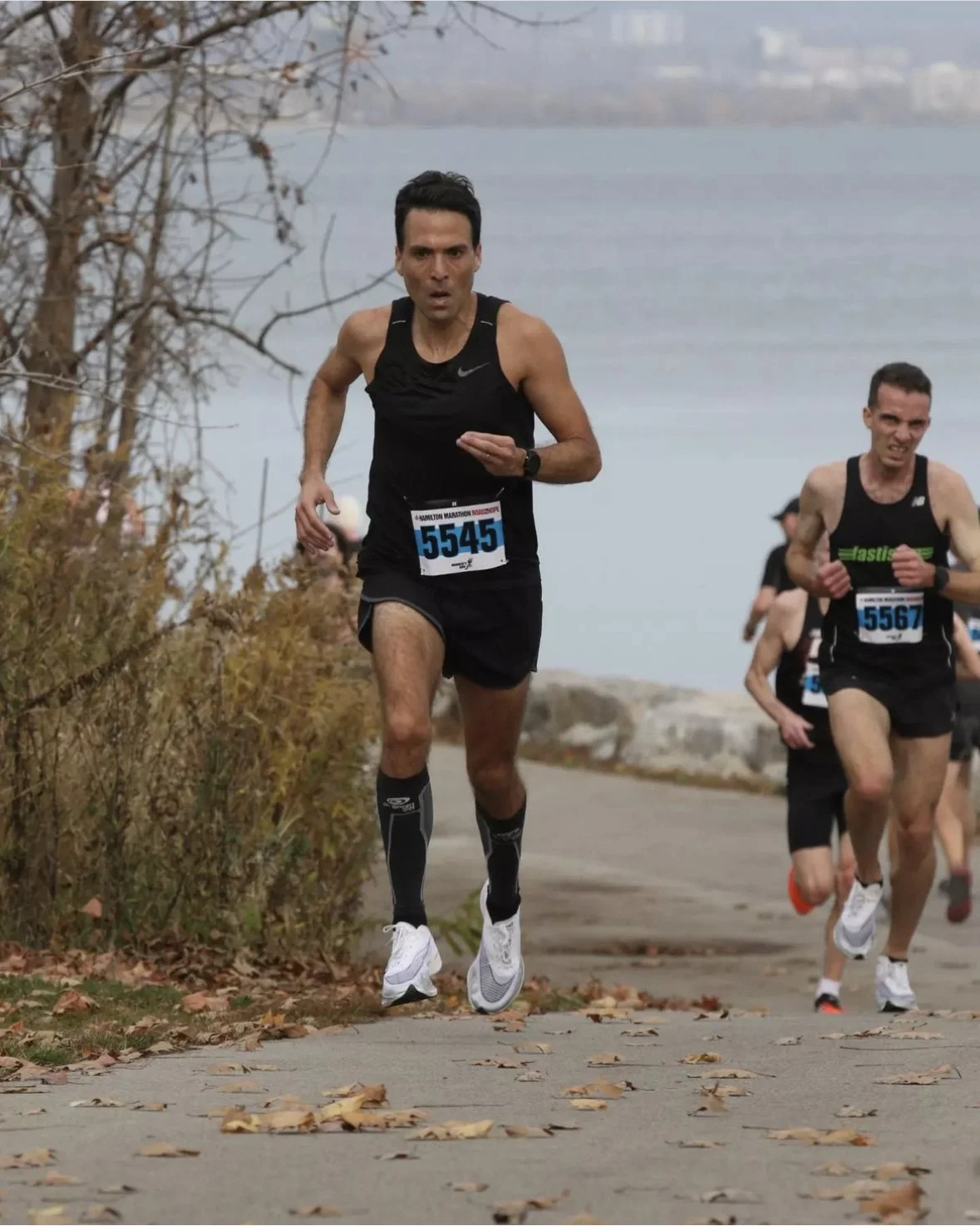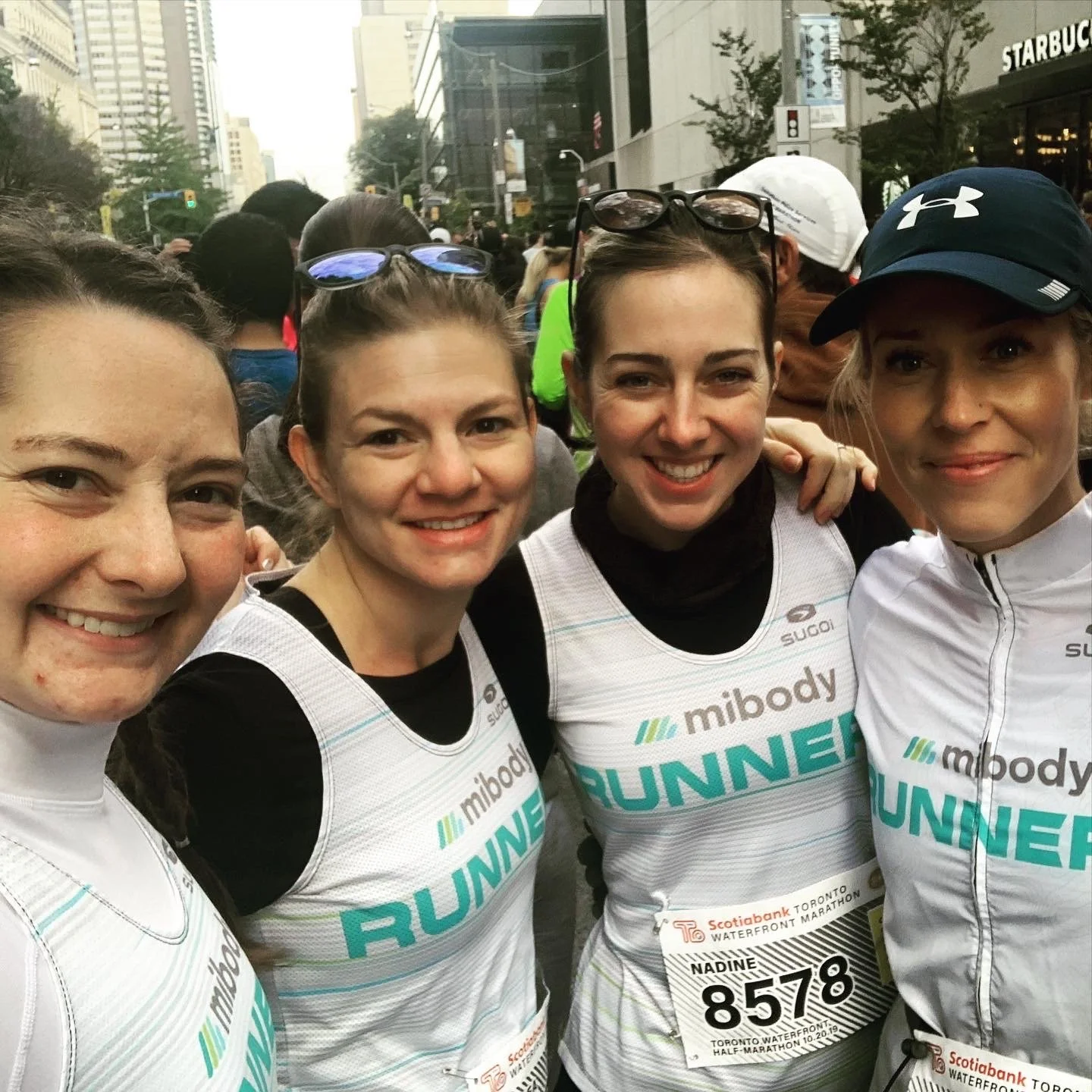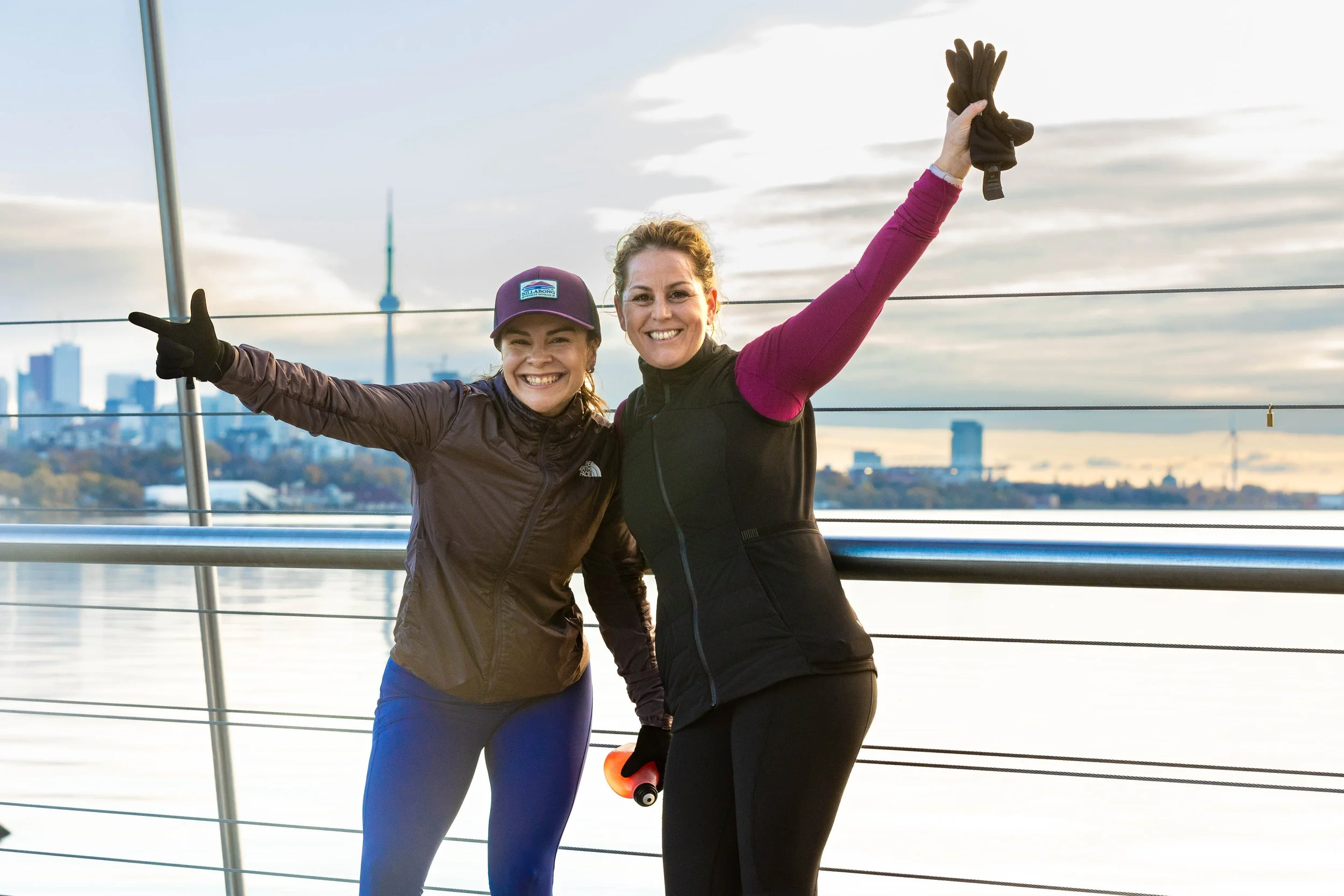
MiBody Runners is a social network of runners and running enthusiasts who participate in group runs, races and events.
Almost five years old, we fully embody a supportive run crew culture. We cheer each other on and celebrate our progress together,
achieving goals we never thought possible. Runners of all levels are welcome. No runner is left behind.
Latest
Updates
Saturday Social - April 27th
Waterfront West Out & Back
Ready, set, run - Our weekly social meetup is happening this Saturday at the MiBody Runners HQ at 7:30am.
Run Crew Schedule

RUN CREW SEASONS
SPRING 2024
March 23rd - Jun 30th
SUMMER 2024
Jul 1st - Sep 2nd - HIATUS
FALL 2024
Sep 3rd - Dec 21st
Saturday Social Run
7:30am - MiBody Studio - STARTS MARCH 23rd 2024
We begin at the MiBody Studio. We offer 5k, 8k & 10k options for all fitness levels. Whether you’re new to running or pushing pace, you will find a run that fits with your goals.
Our group runs are split up between three pace groups.
Group A: 4:45-5:30 m/km | Group B: 5:30-6:15 m/km |. Group C: 6:15-7:15+ m/km
Routes posted in the MiBody Runners Facebook Group.
Wednesday Track
5:30/6am - Redmond Track - STARTS March 20th, 2024
The track provides a controlled environment with free and accessible running to all fitness levels. Come just to run or ready to work on a variety of traditional speed workouts designed to make you run faster, farther & stronger.
Speed work begins at 6:00am SHARP. We recommennd warming up for 15-30 minutes prior to the speed workout. Runners of all abilities are welcome. On the track, no runner is left behind.
Join the MiBody Runners Facebook Group and stay updated!
Training Plans
We combine endurance, speed, cross training and recovery to get you ready to tackle your next race or run.
Our training plans are designed for runners to gradually build up to their distance without stopping. Assess how you feel after each run. If you have a hard week or feel like the workouts are building too quickly, repeat the previous week. Building up slowly will make you stronger and reduce your risk of injury.
5k Training Plan - C25k
Our 'Couch 2 5k' program is designed for those who are brand new to running or re-entering a running habit after a long hiatus.
10k Training Plan - Beginner
Our 10k beginner plan has been created to take a new runner from the 5k distance to run their first 10k.
10k Training Plan - Race Prep
Our 10k Race Prep plan are for those who wish to add speed and improved performance to their next race.
Lifestyle Factors and Additional Training
A well-rounded training plan will include a combination of easy runs and long runs, with the addition of workouts like speed training, strength training, cross training and mobility. Running workouts are designed to add variety into your training plan and build endurance, strength and speed. Below are key components to your training plan.
01
Endurance & Stamina
This plan will help you to improve your endurance and stamina – two things that are crucial when running any training plan. The goal is to get you running further and faster with consistency and progressing at regular intervals.
04
Cross Training
Cross training can help runners add more exercise without risking overuse injuries. It also increases cardiovascular endurance while not taxing the joints as much as the forces incurred through running. Exercises like walking, hiking, swimming, spin/cycling and yoga can all be considered cross training exercises for runners. Cross training can have both mental and physical benefits by helping you minimize running injuries and staying motivated.
02
Speed
Before you begin the plan, it also helps to have a basic understanding of speed training (or speed work). Speed training is a way to increase running speed by using many different types of speed workouts, such as:
Strides | Intervals | Fartleks | Tempo runs
While the focus will be on intervals and tempo running, you could swap these activities for other types of speed work.
05
Rest & Recovery
Any 5k, 10k, half marathon or marathon training plan should include designated rest days. On rest days you should do precisely that – rest! Don’t be tempted to run on your rest days as you risk burnout or injury.
03
Strength Training
Strength training is essential to any running plan. In addition to building strength and endurance, weight bearing activity has many benefits for runners such as improved performance, form/posture and efficiency.
06
Stretching & Foam Rolling
Stretching is a crucial part of the recovery process and helps to alleviate soreness and DOMS (delayed onset muscle soreness). Make time to stretch, particularly after long runs and speed training. You may also want to include foam rolling into your recovery routine to warm your muscles prior to running and recover faster after a workout.
Additional Care Pre & Post Run
-
Adding a proper warm up to your running routine helps to improve running economy and efficiency, leading to a reduction in stress and injuries. Slowly raising the body temperature helps to lubricate your system for the effort ahead. Be mindful that poor preparation can lead to underperformance and injury, so be kind to your body and give it a lot of TLC!
-
Try to precede every run with 5-10 minutes of foam rolling. Foam rolling creates heat and friction, which in turn helps your body’s connective tissue, or fascia, move better. Work through all of the major muscle groups with long sweeping motions from one joint to the next. Place focus on trigger points, or painful/uncomfortable spots within the muscle. It may be uncomfortable at first, but your body will appreciate the care.
-
Active stretching refers to holding a muscle in stretch for approximately three seconds, backing off the stretch for brief moment, then easing back a little bit deeper. Repeat that process 10x then shift the stretch to the opposite leg. Focus on the hip flexors and piriformis. These two muscle groups restrict range of motion more than any other and will make a world of difference in your posture and stride length.
-
Hip mobility drills are dynamic exercises that help to improve the range of motion in your joints and muscles. Press each exercise to a comfortable limit then back off, repeating 10x. Take it slow. Harder is not better here. Let your body warm up with the drill.
Examples include:
Kneeling hip flexor stretch
Pigeon pose
Standing dynamic leg swings
90-90 knee rotations
Deep squat drills
Tips for Successful Training
Think about pacing during your run
If you have a performance goal in mind, work out the pace you need to run to achieve this goal. As you start to push yourself a little harder, setting new performance goals can help you stay motivated and discover how far (and how fast) you can go. Mindfully planning your runs with proper pacing will help you achieve your goals.
Protect your running form
Proper running form and technique plays a huge role in performance. Running form is all about running in the most efficient way possible. Efficiency is a contributing factor to speed, so take some time learn techniques and improve form. An overview of running form cues are simple; Lean slightly forward, look ahead, keep shoulder blades neutral, bend elbows around 90 degrees, loosen the grip in your hands, stabilize the core, lift and flex the knee and push off the back leg. Try to stay relaxed.
Remember that your form is unique. Nobody is the same. Every runner’s form depends on their unique body structure, strengths, and weaknesses. Simple practices and workouts can help you feel lighter and more efficient to propel forward.
Fuel your runs properly
Food and nutrition are really important when it comes to your performance. Ensure you are fueling your body properly with nutritious/wholesome food and make sure you are staying hydrated.
Replenish the electrolytes lost through sweat. Your body is made up of 60-75% water and when you sweat, you begin to lose water quickly. To avoid cramping, nausea, confusion, cutting your workout early, or a DNF at your next race, you can’t just replace the water you lost. Replacing the sodium is critical to rehydrating successfully. MiBody recommends Skratch Labs Sport Hydration Drink Mix as a good source for hydration pre and post-run, available for purchase at MiBody Health & Fitness.
Wear the right running shoes
Success on race day is as much about your training as it is preparation in the form of the right running gear. Choose a proper fitting pair of running shoes that are comfortable and support your feet. Symptoms of wearing the wrong running shoe can vary from poor performance to premature wear and tear, to injury. Ideally, your foot will rest securely in your shoe with each stride.
Unlike your favorite pair of casual shoes, your toes should not touch the end of your shoe when you run, even on a downhill slope. Runner’s toe (or black toe) happens when your toenail turns black from the stress of running. When your toe repeatedly rubs on or slams into your shoe, it can cause stress to your nail. This leads to bleeding under your nail, which starts to look black.
To avoid injury like black toe try wearing a shoe a half size larger than your everyday shoe. Some examples of good entry level running shoes include; Hoka One One Bondi, Saucony Endorphin Shift and Nike Zoom Fly.
Run Terminology
-
Easy running is a comfortable, conversational pace. Focus on building a solid base from which higher-intensity training can be performed. You should never feel like you are “pushing” to hit paces on easy runs. The general rule of thumb is that you should be able to hold a conversation while you run without getting out of breath.
60-65% of HRmax
-
Get comfortable feeling uncomfortable. Run at a consistent and generally hard pace. Tempo running, also known as ‘threshold running’, is a form of speed training that is designed to get you running outside of your comfort zone. The tempo run is an important part of your training programs, they help develop your strength and increase your stamina. For most people a tempo run is done at a pace that you could hold for a 60 minute race and that is done at a HR (heart rate) above 80%, usually 85-90%.
-
Look for a hill that’s between 100 to 200 meters long. Start at the base of the hill, run fast enough to test yourself, but not too fast to compromise form. Easy jog or walk back down and repeat.
-
Every training plan, no matter the distance, will incorporate a weekly long run. They increase your endurance and aerobic capacity, plus improve the efficiency of your cardiovascular system. The extra time on your feet strengthens your musculoskeletal system and enables you to work through muscular fatigue. Whether you’re training for a 10k, half marathon or the marathon, the long run is a crucial component of your training plan. Make sure you run at a comfortable pace during your long run, they shouldn’t feel too challenging.
70-80% of HRmax
-
Interval running involves alternating short bursts of sprinting followed by a brief recovery period such as a slow pace run (active recovery) or walk (passive recovery). Build the number of repetitions over time. To improve, increase intensity or duration, but not both at the same time. Make any changes slowly over a period of time. Beginners should start with short intervals (under 30 seconds), fewer repeats, and more rest. Elite athletes can up the intensity, time, and frequency of training.
90+% of HRmax
-
Fartlek running is unstructured and alternates between moderate to hard efforts with easy efforts throughout. After a warmup, you play with speed by running at faster efforts for short periods of time (to that tree, to the sign) followed by easy effort running to recover. The goal is to keep it free flowing, so you’re not tied to a watch or a plan, and to run at harder efforts but not a specific pace.
-
Short, controlled sprints that last between 15-25 seconds. They’re done in sets of 4-10, starting at your interval (high intensity) pace and working up to a full sprint. Strides are short bursts of intervals that can be done at the beginning or end of your run.
-
Mid way through the plan you will be doing what is called a ‘time trial’. You run a hard effort for a given distance, time, or route to get a sense of your current fitness. A Time Trial is designed to test your fitness, normally halfway through the plan, so you can understand how you’re doing and what you might need to calibrate to improve certain areas. Time trials, when repeated several times over the course of a training block, will also help you gauge how your fitness is progressing.
-
Ease into your workout to warm up and increase blood flow to the muscles. Warm up with a brisk walk or a light jog.
-
During the run, you accumulate lactate in the leg muscles, your body temperature is high, and your blood vessels are constricted. Cooling down with a light jog or a walk after your run allows your body to slow itself down by bringing your heart rate and your body temperature back to normal.






